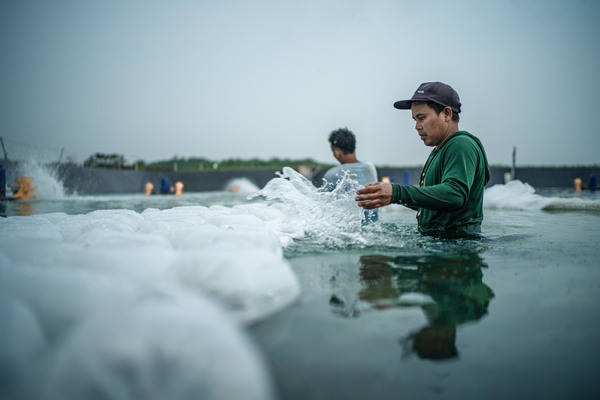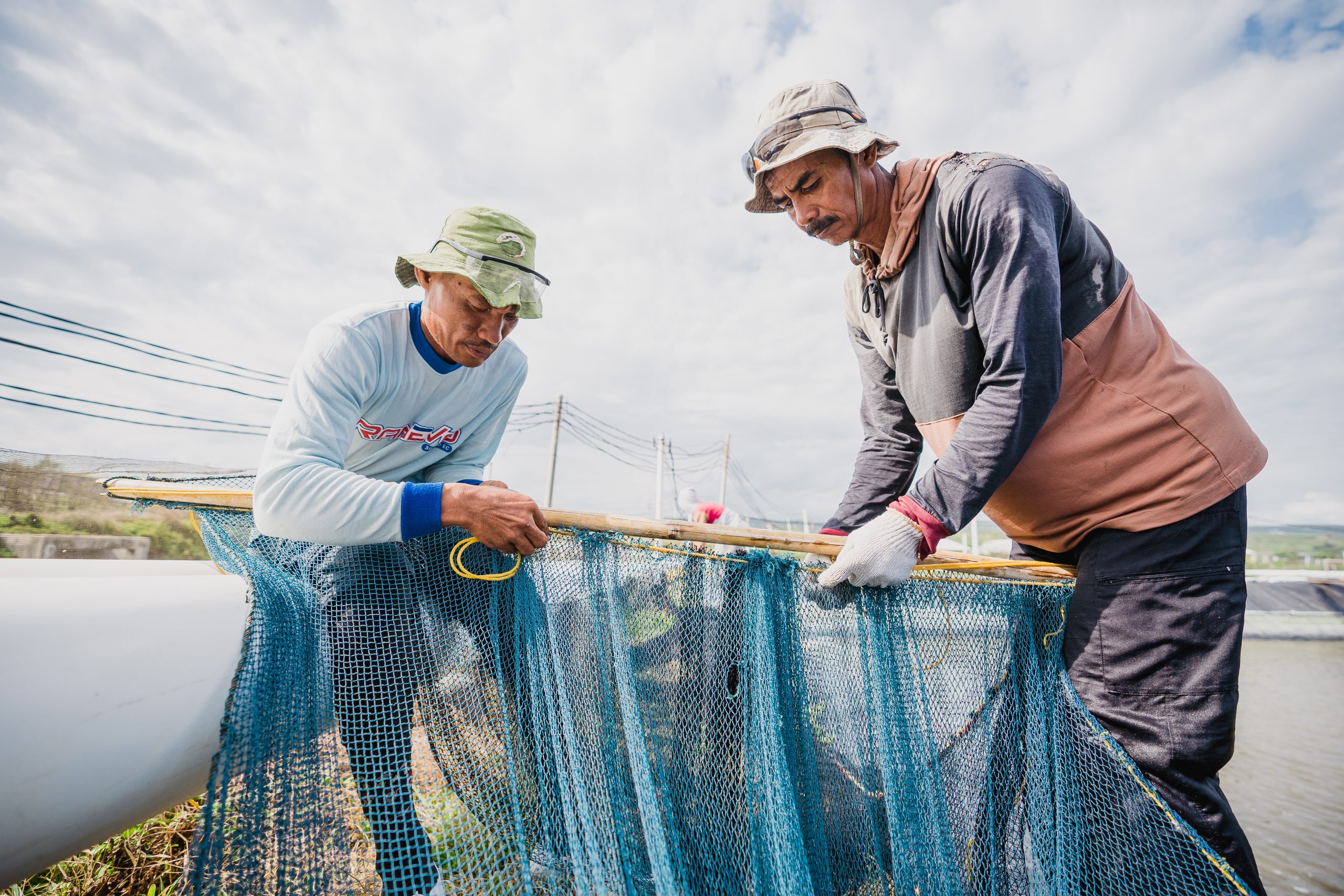How to Reduce Vannamei Shrimp FCR for More Profitable Cultivation
In vannamei shrimp farming, feed management is essential because feed costs around 40-50% of the total costs incurred during cultivation. Therefore, farmers must know how to reduce the FCR (feed conversion ratio) to manage feed costs.
Poor feed management can cause several problems. One that is often encountered is overfeeding. This causes high FCR and production costs during cultivation.
However, before knowing how to reduce the FCR, farmers must first understand what causes the FCR in the vannamei shrimp culture to be high. Come on, see the following discussion to find out.
Also Read: The Efficiency of Vannamei Shrimp FCR for Successful Cultivation
Causes of High FCR
Limsuwan (2010) states five mistakes generally occur in vannamei shrimp feed management practices. These errors lead to high FCR numbers.
1. High Pond Water Temperature
Water temperatures higher than optimal conditions can cause the shrimp’s metabolic system to be disrupted. This causes a decrease in shrimp appetite so that the feed is unused. The accumulation of leftover feed and feces at the bottom of the pond can reduce the quality of pond water, impacting the shrimp’s health. In addition, the growth of the shrimp will also be slow because the feed given needs to be eaten completely.
2. Overfeeding
Overfeeding is a common problem when farmers determine the amount of feed given based on the amount of feed remaining in the anco. On the other hand, farmers must provide feed based on the stocking density of shrimp.
Farmers must know how many fries are stocked in each pond and consistently monitor the survival rate (SR) to determine how many shrimp are left in the pond to calculate the amount of feed to be given.
3. Frequency of Excessive Feeding
Usually, the feeding of vannamei shrimp is 3 to 5 times daily for 4.5 hours.
However, few farmers use a different feeding system, for example, four times a day for only 3 hours. With this feeding frequency, more feed will be left, and the FCR will be high.
4. The Water Flow is Too Fast
In intensive system vannamei shrimp farming, shrimp cultivated with high stocking densities require several ‘wheels’ to maintain optimal DO (dissolved oxygen). However, if the waterwheel current is too fast, the feed will settle in the middle of the pond so that the shrimp will not eat and waste it.
The way to prevent this problem is to turn off some of the waterwheels at the time of feeding so that the water currents do not carry the feed to the pond’s center. However, all the pinwheels should not be turned off simultaneously, especially if the prawns have reached their adult size. This is to avoid the shrimp’s lack of oxygen.
5. Lack of Waterwheels
A sufficient number of wheels in a pond can prevent sediment from accumulating at the bottom of the pond. This causes the oxygen levels in the pond to decrease and fall below the optimal level, which triggers a decrease in appetite and growth of vannamei shrimp so that the FCR becomes high.
In addition, oxygen levels that are not optimal can also make aerobic bacteria not get enough oxygen to break down the sludge and sediment that has accumulated in the middle of the pond, so that anaerobic bacteria will take over the decomposition process with by-products that are harmful to shrimp, such as ammonia, nitrite, and hydrogen sulfide (H2S).
The way to prevent the problem of lack of pinwheels is to reduce the number of shrimp stocked in the pond so that there will be enough oxygen and the pond bottom will remain clean during the rearing period.
Also Read: Vannamei Shrimp Probiotics and Its Benefits For Cultivation
How to Reduce Vannamei Shrimp FCR
1. Make Sure the Water Quality is Always Optimal
Maintaining water quality parameters in maintenance to ensure optimal growth and FCR of vannamei shrimp is important for the growth and health of vannamei shrimp. Shrimp are very sensitive to environmental changes, and optimal water quality is expected to produce a good FCR value.
2. Optimize Stocking Density
Excessive vannamei shrimp stocking densities can result in high FCR because shrimp compete for food and space. Some tips for optimizing the feed conversion ratio (FCR) can be done by giving feed periodically throughout the day, avoiding overfeeding, make sure the feeding is done evenly.
3. Do Regular and Proper Feeding
Shrimp need proper feed intake to grow and achieve optimal feed conversion ratio (FCR). Therefore, farmers must provide feed regularly throughout the day with the appropriate dose based on the age and body size of the shrimp.
4. Adjust the Feeding Frequency
Vaname shrimp must be fed with sufficient frequency to meet their nutritional needs. However, the frequency of this feeding should not be too frequent which can cause the feed not to run out and be wasted.
Excessive feeding can lead to higher FCR due to increased uneaten feed residue. This leftover feed can also damage water quality and reduce growth rates.
Also Read: Types of Vannamei Shrimp Feeds to Make Your Shrimp Grow Faster
Vannamei Shrimp Cultivation More Profitable with DELOS!
How to suppress FCR in vannamei shrimp cultivation is important for farmers to know. This is because a high FCR can occur at any time if the applied feed management is not optimal and causes the cultivation to be less productive.
Now, you can entrust the management of your vannamei shrimp ponds to DELOS! DELOS offers pond management based on science, technology, and the best operational management for more productive vannamei shrimp farming practices.
DELOS farm management is also integrated with the AquaHero application, making it easy for every farm owner and farm personnel to monitor the condition of shrimp ponds anytime and anywhere.
Also, DELOS also has AquaLink, an integrated supply chain program that can help you obtain and sell pond products at competitive prices with the best quality.
You can contact our team via contact@delosaqua.com or submit your vannamei shrimp farming problems on our website at www.delosaqua.com. Vannamei shrimp farming is more profitable with DELOS!
__________
Source:
Limsuwan, C. (2010). How to Prevent High Feed Conversion Ration in Shrimp Farming. Kasetsart University Fisheries Research Bulletin 2020, Volume 34 (1) page 28-34.



